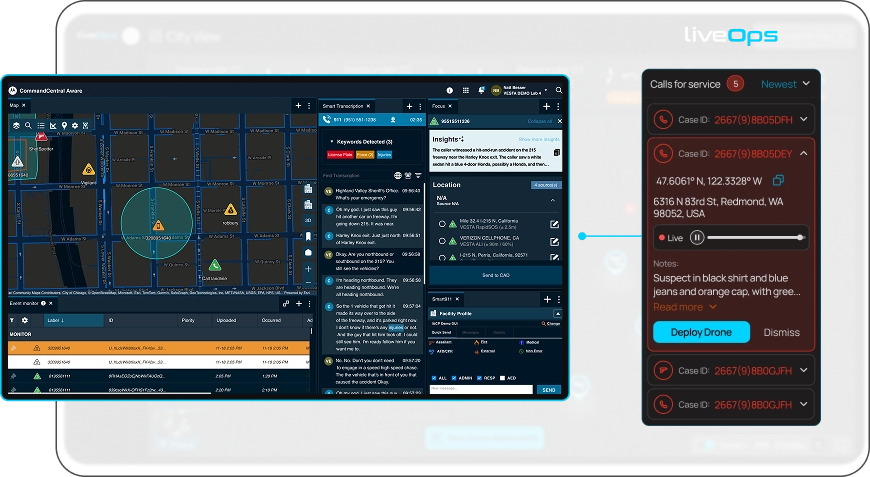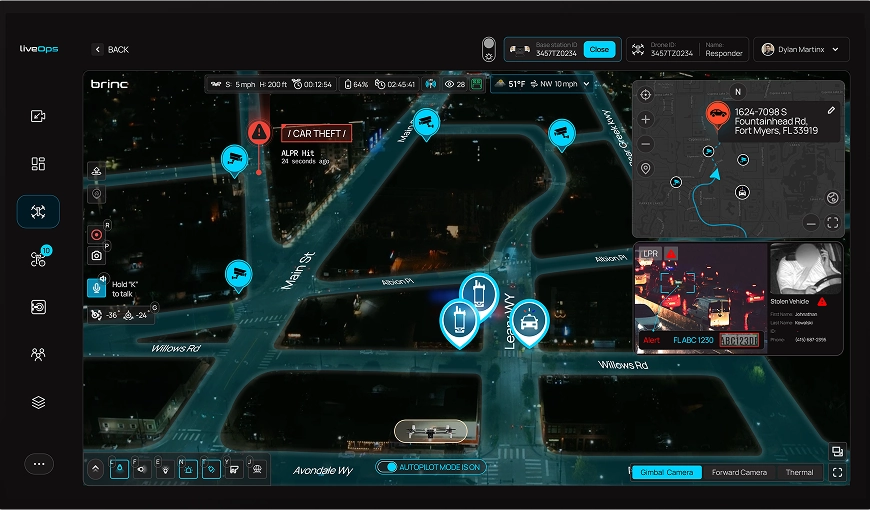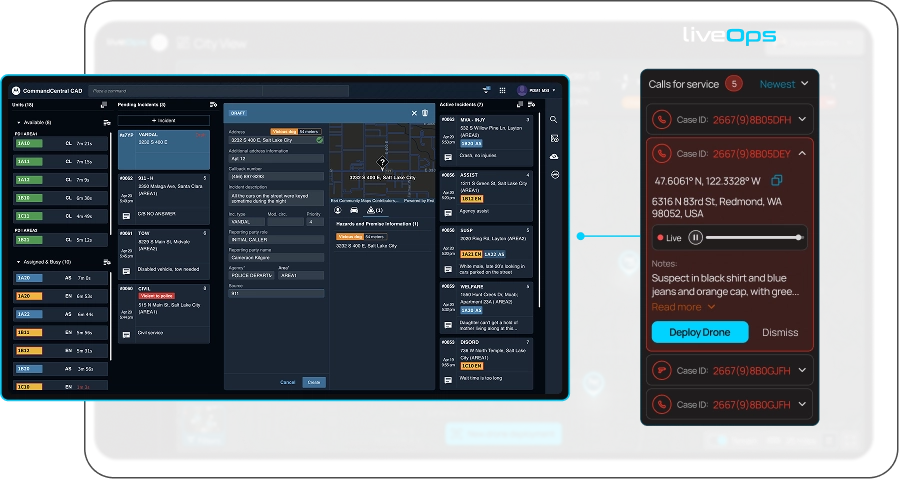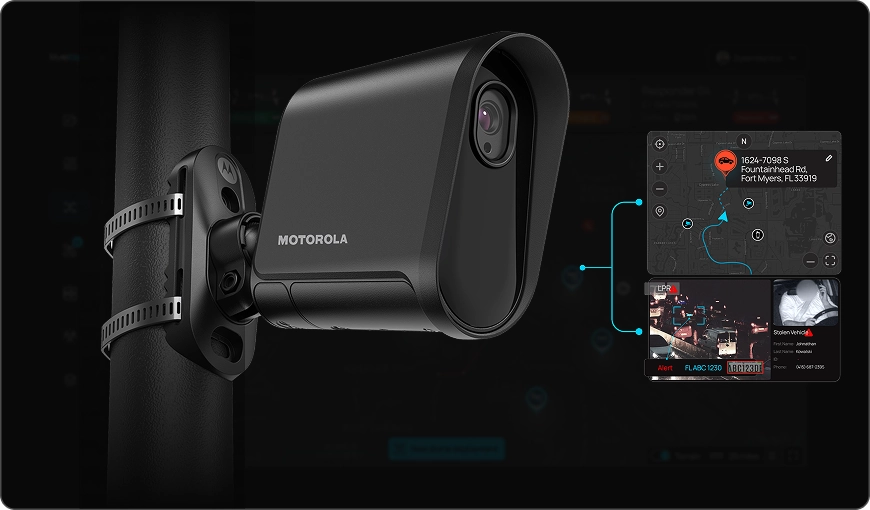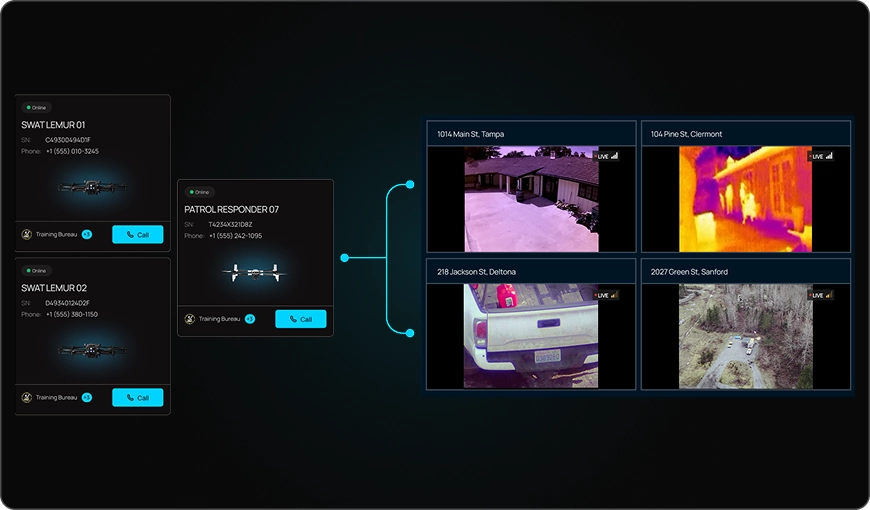Drone as
First Responder
A comprehensive guide to implementing and managing a Drone as First Responder (DFR) solution–from securing funding and staffing to navigating regulations and integrating outdoor and indoor drone operations.
Download Now
Transforming Emergency Response with Aerial Technology
The need to modernize emergency response methods has never been greater. As crisis management and proactive intervention strategies evolve, drones–also known as small Unmanned Aerial Systems (sUAS)–have emerged as indispensable tools for first responders. By providing real-time situational awareness, drones enhance decision-making, improve response times, and increase safety during both critical incidents and routine calls.
Aerial support is a game-changer in emergency situations, leading to safer and more effective outcomes on the ground. While helicopters have traditionally provided the real-time video feeds and guidance from the sky, drones now offer a faster, more cost-effective, and widely accessible alternative for first responders.
What You’ll Learn in This Playbook:
- What is Drone as First Responder (DFR)? A look at its the history and evolution
- How DFR integrates with public safety agencies (police, fire, EMS)
- Key considerations before launching a DFR program
- Step-by-step guidance on regulations, staffing, compliance, and scaling your DFR solution.



